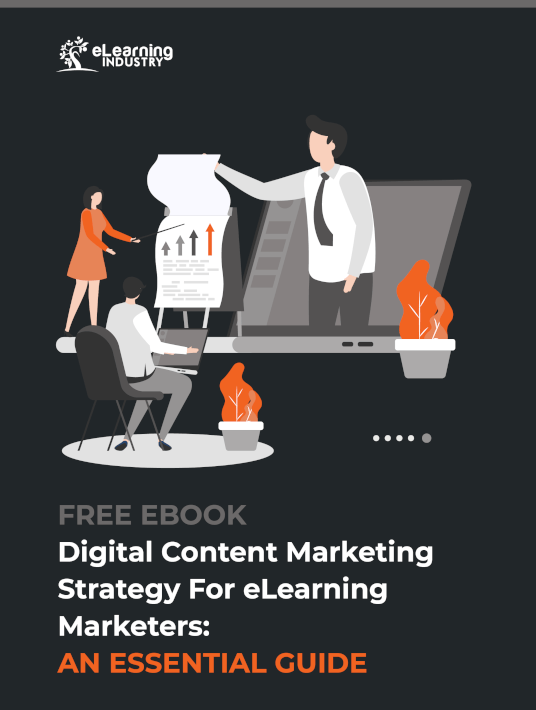Making A Content Marketing Competition Analysis In The eLearning Niche
There’s no such thing as an original idea, but audiences demand original content. What’s a marketer to do?
Just because someone has told a similar story, that does not mean audiences are tired of the tale. On the contrary, people enjoy the familiar — as long as the storyteller presents the information in an exciting way. There is a reason remakes are so common in Hollywood.
Discovering a “new” idea for great content is less about originality and more about execution. Audiences might have seen it all before, but no one will care that it’s a retread as long as you offer the right piece of content at the right time. The trick is anticipating what audience members want next and providing content to match their mood when the moment is right.
With so much pressure to perform, brands frequently fail to take advantage of one of their most valuable assets: the competition. Why agonize over an endless list of possibilities when others have already created a database of useful information? By performing a competition analysis, brands can discover the types of content that work best and create more successful pieces on a tighter budget.

The Beauty Of A Content Marketing Competition Analysis
The eLearning audience already knows what eLearning software does, for instance. Content creation in this industry is less about education and more about conversion. Most deals come from people who are actively seeking eLearning solutions, and companies must be more convincing than their competition if they want to close sales.
It’s hard to stand out from the competition if you don’t know what the competition is saying. Content marketing exists in the real world rather than in a void. To get an accurate assessment of the landscape, companies must identify their competitors, analyze their strengths, and look for areas of opportunity to build a stronger message.
The competition analysis is the foundation upon which a great content marketing strategy stands. Whether your company has created content for 40 years or a fortnight, regular assessments and reassessments of the industry landscape can provide context regarding which content is most effective.
As much as marketers claim to rely on hard information, few back up their claims. Only 37 percent of B2B marketers follow documented content strategies [1]. The rest wing it, which means the companies that spend time planning their attack have an incredible opportunity to gain market share.
Analyzing the competition and creating a plan based on those findings takes time, but the payoff is worth it. It’s better to make $100 later than $20 today — and content marketing done right has the power to deliver that kind of return on investment.
Executing A Content Marketing Comprehensive Competition Analysis
A thorough competition analysis leads to a variety of benefits. Not only does it inform marketers about the state of the competition, but it also identifies opportunities for quick gains and sets the stage for long-term success. The more thorough the competition analysis, the more successful the strategy that follows. Here are four (plus 1) steps to help you take stock of your sector:
1. Take Inventory Of Your Competition’s Content
Don’t rush your market analysis. Start by making a list of every potential competitor. Then, create an inventory that includes where competitors publish, what types of content they use and which audiences they target.
Company blogs host useful short-form content, but they are far from the final word on content marketing. Check out social media, podcasts, webinars, long-form content like whitepapers, videos, and emails (if possible).
Your goal is to understand how much the competition invests in content and which types of content are most successful with their audiences. In the eLearning market, most companies share the same audience pool — so what works for one tends to work for all. Your analysis should also include a study on the comparative importance of different topics and keywords.
2. Evaluate Content Quantity And Quality
Once you’ve created an inventory, it’s time to put that collected content under a microscope. Which pieces seem unsuccessful and which ones look like winners? Where do competitors invest their time and budget? How do audiences respond to different pieces?
Pay careful attention to channels as you work through this process. If your competitors focus more heavily on one channel than others, they probably have data supporting that strategy.
Don’t take their actions as gospel, however. Plenty of companies follow bad strategies blindly. Instead, look at audience engagement as the deciding factor. If the competition pumps out a bunch of content that no one seems to read, it should show you that they’re only wasting resources.
Consider which best practices your competitors follow most closely. Do they use tags on blog posts and categorize their published works? Do they rely on the topics alone for credibility, or do they build up author personas? How often do they gate their content?
3. Tag And Analyze Content Topics
With a structure for your strategy beginning to take shape, move on to the topics within that framework. Tag different topics, and look for patterns to identify what’s covered, what isn’t and where the competition might be leaving audiences wanting more.
No one can digest every piece of content from every angle. Start with the most popular content and dive into those, giving less popular pieces a quicker investigation. Use tags on everything to create a master spreadsheet that breaks down everything about the competition’s strategy.
By the end of this exercise, your spreadsheet should provide a thorough deconstruction of how your competitors use the content. It should also reveal some opportunities that you can capitalize upon.
4. Make A Habit Of Checking Out The Competition
Big changes take time. Rather than perform a thorough competition analysis once and forget the information a few months later, routinely lean on this data to inform the creation of new content.
Competitors will continue to create and publish new content, so set a schedule to review and update your analysis. This can uncover trends in the competition’s approach and provide insights that would not be obvious via any other method of measurement.
In a few cases, it might even reveal something unexpected: partnership opportunities. Industry players without competitive products might have something else to offer. A competition analysis can help your company identify those possibilities before others catch on.
5. Reach Out To An Agency That Specializes In Corporate eLearning
Agencies and publications that focus on an industry have a lot to offer in competitive analysis. So much critical data is carved into their DNA.
No niche agency or trade publisher will share confidential information. At the same time, their people cannot forget what they have already learned from past campaigns in your niche. So when they make suggestions for your content strategy, ideas like topic fatigue, recent trends, and competing narratives will guide their insights for you.
Not every competition analysis bears immediate fruit, but don’t let lackluster initial results deter you. The greatest rewards require a little more digging. Use a competition analysis to spot the trends and patterns that exist in the content strategies of others, and then leverage that information to create smarter content that supports a stronger strategy.
Content Marketing serves the purpose of improving conversions using a very strategic approach, connecting and supplying leads and potential customers with real value. Download the free eBook Digital Content Marketing Strategy For eLearning Marketers: An Essential Guide to delve into an excellent method to start building long-lasting relationships by establishing trust, and see conversions skyrocket by giving users the information they need to make an informed purchasing decision.
References:
[1] 2018 Benchmarks, Budgets, and Trends-North America

